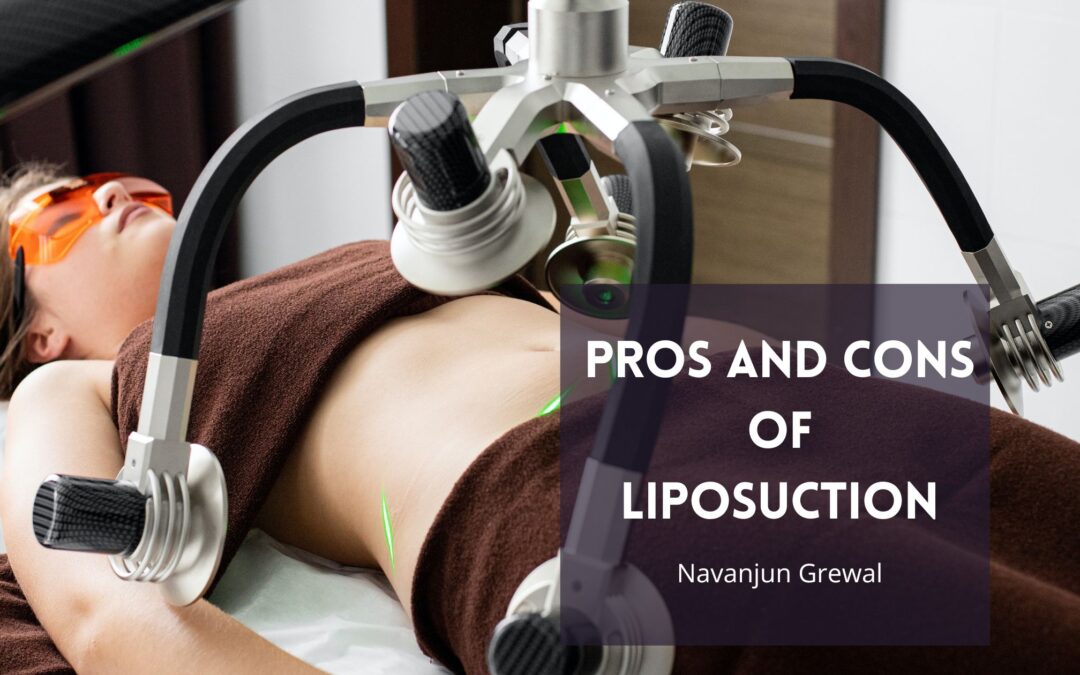Liposuction, a popular cosmetic surgery, has been a sought-after solution for body contouring and fat removal for decades. As with any medical procedure, it’s essential to understand the potential benefits and risks involved.
Pros of Liposuction:
- Targeted Fat Reduction:
Liposuction targets fat that can’t be removed through diet and exercise. Common areas include the abdomen, thighs, flanks, and arms. This procedure provides a more contoured, sculpted appearance.
- Quick Results:
One of the primary advantages of liposuction is the immediacy of visible results. Although there will be initial swelling post-surgery, the treated areas will appear slimmer once this subsides, and these changes are long-lasting, provided the patient maintains a stable weight.
- Boost in Confidence:
Physical changes often lead to improved self-esteem and confidence. Achieving a desired body shape can have positive psychological effects, enhancing a person’s overall well-being.
- Minimally Invasive:
Compared to other surgical procedures, liposuction is relatively minimally invasive. Modern techniques, like tumescent or laser-assisted liposuction, have further reduced the invasiveness and recovery time.
- Improved Physical Comfort:
Beyond aesthetics, the removal of excess fat can lead to increased comfort. For instance, chafing thighs or underarm discomfort can be alleviated with liposuction.
Cons of Liposuction:
- Not a Weight-Loss Solution:
It’s crucial to understand that liposuction is not a weight loss remedy. It is designed for contouring and removing localized fat deposits, not significant weight reduction. Those seeking substantial weight loss should consider dietary, exercise, or other surgical options.
- Possible Complications:
Like all surgeries, liposuction carries risks. Complications might include infection, bleeding, asymmetry, contour irregularities, and anesthesia risks. Choosing a certified and experienced surgeon to minimize these risks is essential.
- Costs:
Liposuction is a cosmetic procedure and, as such, is usually not covered by insurance. The costs can be high, factoring in surgeon’s fees, hospital charges, anesthesia, and post-surgery garments.
- Recovery Time:
Although it’s minimally invasive, liposuction requires downtime. Patients might need several days to weeks off work, which might be longer before returning to intense physical activity.
- Temporary Side Effects:
Post-operative side effects such as swelling, bruising, and discomfort are expected. While these typically subside within a few weeks, they can be off-putting for some.
- Skin Irregularities:
Sometimes, after the fat is removed, the skin might not retract or adjust to the new contour, leading to sagging or dimpling. This is more common in older patients with less elastic skin or those with large amounts of fat removed.
Liposuction can be transformative for those looking to shape and contour specific body areas. However, it’s imperative to approach the decision with a clear understanding of what the surgery entails, its limitations, and potential risks.
Those considering liposuction should conduct thorough research and consult with a board-certified plastic surgeon. This ensures that the procedure aligns with their goals and that they know all potential outcomes. Remember, cosmetic procedures are deeply personal choices; what works for one individual might not be suitable for another. It’s all about finding the fit for your unique needs and desires.
